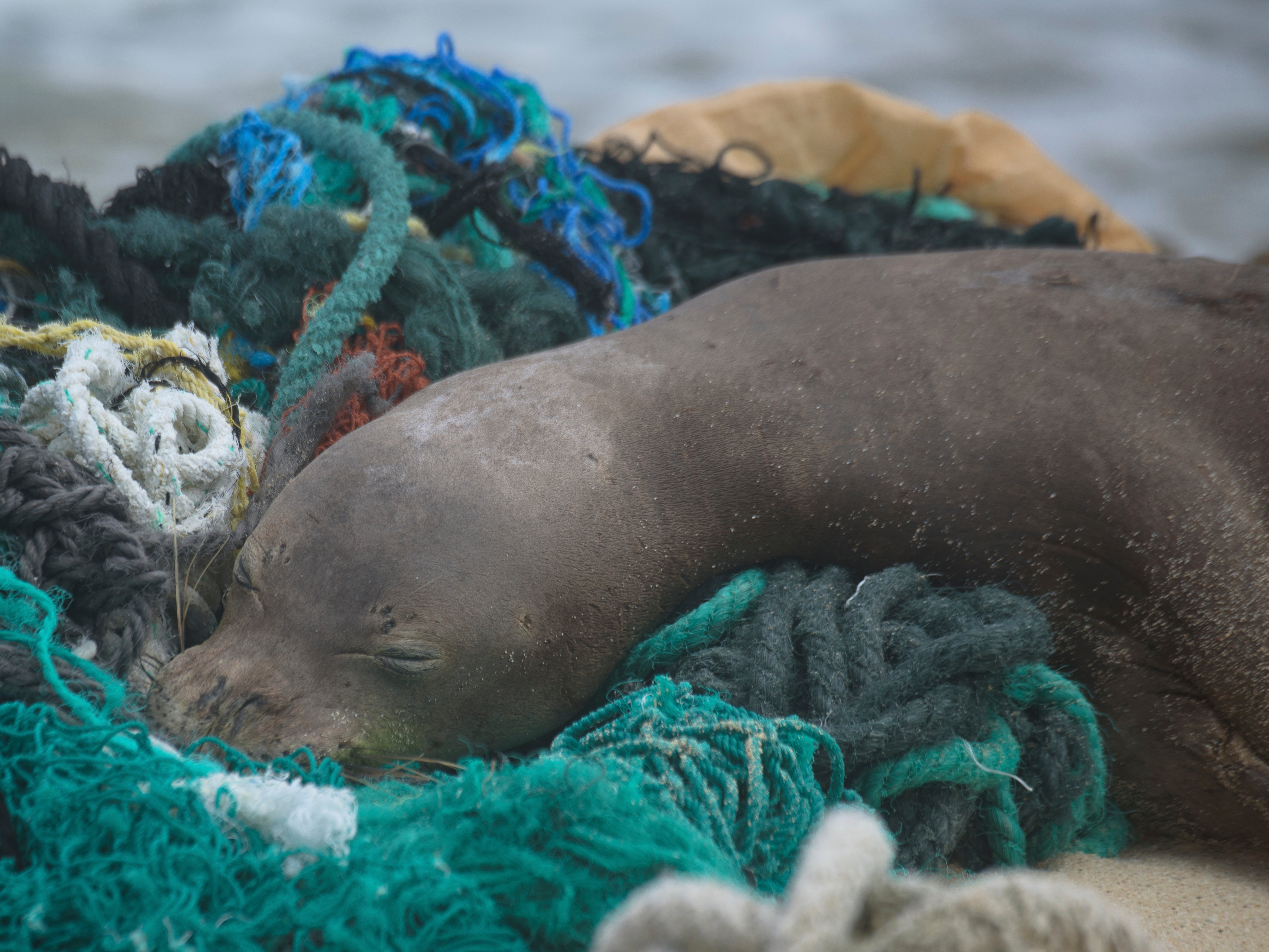More than 47 tons of plastic found in Hawaii marine reserve
‘There is no permanent human presence witnessing these events and it’s so telling that within one day we found an entangled monk seal. For every one we do see, there must be many more that go unseen’
Your support helps us to tell the story
From reproductive rights to climate change to Big Tech, The Independent is on the ground when the story is developing. Whether it's investigating the financials of Elon Musk's pro-Trump PAC or producing our latest documentary, 'The A Word', which shines a light on the American women fighting for reproductive rights, we know how important it is to parse out the facts from the messaging.
At such a critical moment in US history, we need reporters on the ground. Your donation allows us to keep sending journalists to speak to both sides of the story.
The Independent is trusted by Americans across the entire political spectrum. And unlike many other quality news outlets, we choose not to lock Americans out of our reporting and analysis with paywalls. We believe quality journalism should be available to everyone, paid for by those who can afford it.
Your support makes all the difference.More than 47 tons of plastic was removed from the sea, sometimes directly off of animals, on Hawaii shorelines during a project lasting 24 days.
A non-profit with support from agencies on the state and federal level led a team covering 10 miles of shoreline in the northwestern Hawaiian Islands.
The area included the atolls and islands of the Papahānaumokuākea marine national monument. The team gathered 94,472 pounds of trash, focusing on items posing a danger to animals.
This includes old, broken, fishing equipment, often nets referred to as “ghost nets”, The Guardian reported.
Kevin O’Brien, the president of the Papahānaumokuākea Marine Debris Project, told the paper: “On our first day we came across a four-year-old female Hawaiian monk seal who had a bit of net wrapped really tightly around her neck.”

“You could see her trying to dig at it with her flipper,” Mr O’Brien added. He said it was common for the team to come across animals struggling to get free from pieces of garbage.

“There is no permanent human presence witnessing these events and it’s so telling that within one day we found an entangled monk seal,” Mr O’Brien told The Guardian, adding: “For every one we do see, there must be many more that go unseen.”
“Ghost nets” made up 80,000 pounds of the trash they collected, while roughly 14,000 pounds were plastic items, such as fishing buoys, baskets, bottles, and cigarette lighters.
The Papahānaumokuākea marine reserve is more than 1,300 miles from Hawaii’s capital Honolulu and takes up more than 500,000 miles of the Pacific ocean. It’s home to the endangered Hawaiian monk seal, the green turtle and 14 million seabirds.
Beaches far from any human activity still end up with a lot of trash because of currents and the area’s proximity to the Great Pacific garbage patch, with more than 2 million pounds of sea garbage having been collected from Papahānaumokuākea since 1996.
The stunning amount of plastic being used, and the lack of proper recycling, means that around 8 million tons of plastic end up in the oceans every year, according to the International Union for Conservation of Nature.
According to a 2019 study, the plastic that’s floating on the surface of the water only makes up for one per cent of all the trash that’s actually gone into the oceans. The amount of plastic going into the seas each year is estimated to triple in the next two decades.
Some fish start eating plastics when they are only days old, possibly because some plastics smell like fish prey.
The Papahānaumokuākea Marine Debris Project organised the trash-collecting expedition with assistance from the state of Hawaii, the National Oceanic and Atmospheric Administration, the US Fish and Wildlife Service and Hawaii Pacific University.
Team members roamed the shoreline, and at times dragged hundreds of thousands of pounds of garbage along with them. Nets brought to land by storms frequently required significant digging to get out. Pieces of plastic smaller than 10 cm were abandoned.
Mr O’Brien told The Guardian: “If you focus on anything too small you waste your time because there’s so much plastic.”
He added: “[We’re] simply keeping up with the problem just so the wildlife can have a shot. Our cleanups are really having an impact on this place and for the species there.”
Join our commenting forum
Join thought-provoking conversations, follow other Independent readers and see their replies
0Comments